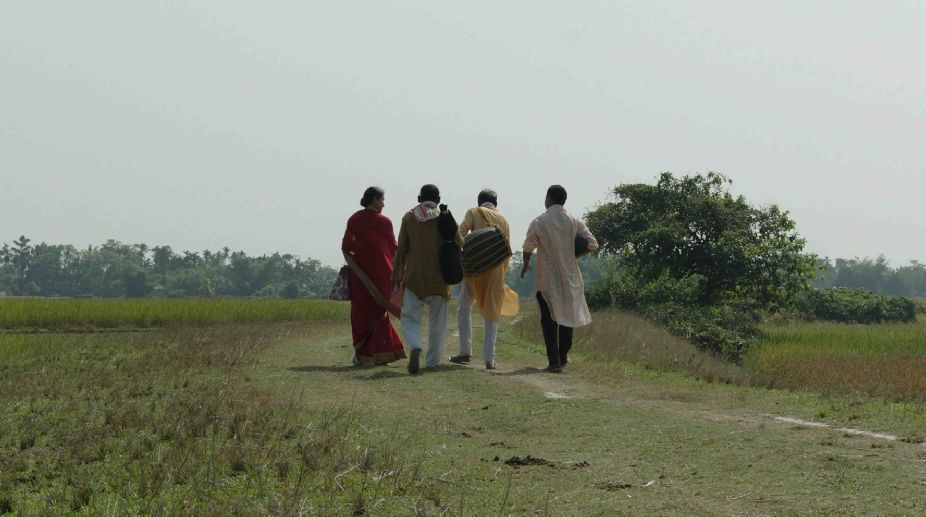Suddenly there are signs of a revival of cinema in the North-east. The Satyajit Ray Film and Television Institute have opened a unit in Arunachal Pradesh that should draw young people with an interest in the medium.
Technical and other support offered by the institute should be a major source of encouragement. There is already the example of a young graduate from SRFTI, Paban Kumar, having gone to a large number of festivals with his film, Lady of the Lake, and has found support for his next film too.
It now seems that a new generation has emerged after Aribam Syam Sarma and it should find new openings after the state government has taken the initiative to set up a film institute. There are financial hurdles, especially for young enthusiasts wanting to embrace the creative possibilities of cinema. Hence the new initiatives in Arunachal Pradesh and Manipur should be a boon especially for locals who no longer need to look for abundant resources to be able to learn the craft of cinema in Pune or Kolkata. The facilities are now available nearer home.
Equally conspicuous is the surge on the production front in Assam. It was just a few years ago that one had learnt with great regret that fewer films were being made in the state.The film developmentcorporation had been generating some interest with the support it had been giving to new filmmakers,mainly for documentaries, and by organising workshops and lectures with the help of professionals from Mumbai and Kolkata. Whether the academic initiatives have anything to do with the emergence of a new generation is a matter of speculation.
Advertisement
The fact is that a good number of first-time directors have emerged along with others who have maintained a steady flow of films in a style that is outside the popular trend. This is the most encouraging development in the Northeast after there appeared to be a lean patch with the passing away of Bhaben Saikia, and Jahnu Barua’s gradual movement away from the regional scene to Mumbai where he has been exploring a larger market with Hindi films and is now said to be working on a film in English. Saikia and Barua were the leading figures of the new cinema in Assam.
The former was a writer and poet and moved to the world of moving images with films like Sandhyaraag and Agnisnan that revealed asensitivity that made discerning audiences take notice of his work. Jahnu relocated to Mumbai and found there was a bigger world in festivals after Halodhia Choraye Baodhan Khai was adjudged the Best Film at the National Awards in 1987. Since then he hasn’t looked back. Films like Maine Gandhi Ko Nahin Mara, produced by Anupam Kher, may not have got the box-office it looked for but found critical appreciation and went to several festivals. Jahnu perhaps could claim credit for Assamese films breaking through on the national scene.
Bhupen Hazarika had also been making films since the 1950s when he directed Era Brator Sur. But this stalwart is remembered more as the powerhouse of musical ideas since the days of the Indian Peoples Theatre Association that were carried over to the screen as well, finally fetching him the Dadasaheb Phake Award in 1992. What has now come as a pleasant surprise is the burst of talent that has been embracing new ideas and styles. Some of them are fresh arrivals like the young woman director who has made her first film on an old man struggling to come to terms with his loneliness in a village after his sons move further and further away from their roots. The honesty in the treatment and the cinematic concentration were quite extraordinary since this was not destined to find a popular response. A similar kind of artistic consciousness comes through in quite a few films made in Assam over the last few years. Some of them have been made by a new generation of women directors.
Manju Borah first shot into a prominence withAai Kot Nai that tried to explore the alienation of youth and the root causes for the disenchantment. It won the National Award for the Best Film on National Integration. Later she made Baibhab and Akashitarar Kathare that confirmed a commitment to the off-beat spirit. Arup Manna has claimed attention with Aarohi and Adieu. But this year the film that has gone places is Sonar Baran Pakhi, directed by Bobby Sarma Baruah and produced by the Assam State Film Development Corporation.
At a time when biopics have produced a surge of excitement elsewhere, this is the story of Pratima Barua who had spurned the comforts of a royal upbringing to explore the mesmerising appeal of folktunes. With pioneering zeal, she sought various platforms for the musical form that have not only made her a legend but enabled the music rooted in the soil to break social barriers.
The film is acourageous docu-drama made in the Rajbangshi language that recreates the magic of folk and leaves telling impressions of the social environment. A jury prize at the Indian film festival at Los Angelesis a success for the director who has taken the film to Dhaka, Bengaluru and several festivals. Discerning viewers may now expect a bigger blast from the region.
Advertisement











